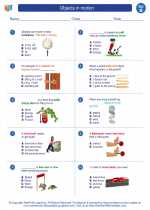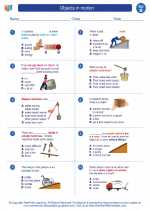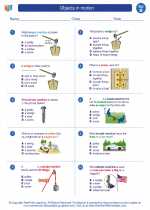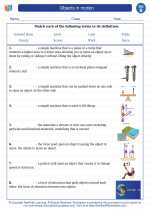Flowers
Flowers are the reproductive structures found in flowering plants (angiosperms). They are essential for the plant's reproduction and come in a wide variety of shapes, sizes, and colors. Understanding the structure and function of flowers is important for understanding the process of plant reproduction.
Parts of a Flower
A typical flower consists of the following parts:
- Petal: The colorful, often scented part of the flower that attracts pollinators.
- Stamen: The male reproductive organ of the flower, consisting of the anther and filament.
- Carpel: The female reproductive organ of the flower, consisting of the stigma, style, and ovary.
- Sepal: The outermost part of the flower, usually green in color, and protects the flower bud before it blooms.
Functions of Flowers
Flowers serve several important functions:
- Reproduction: Flowers are the site of sexual reproduction in plants, where pollen is transferred from the stamen to the carpel, leading to the formation of seeds.
- Pollination: Pollinators such as bees, butterflies, and birds are attracted to flowers by their colors and scents, and in the process of feeding, they transfer pollen from one flower to another, enabling fertilization.
- Seed Formation: After fertilization, the ovary of the flower develops into a fruit containing seeds, which are dispersed to grow into new plants.
Types of Flowers
There are various types of flowers based on different criteria, such as their reproductive structures, symmetry, and specialized adaptations for pollination. Some common types of flowers include:
- Complete Flowers: Flowers that contain all four main parts - petals, stamens, carpels, and sepals.
- Perfect Flowers: Flowers that have both male and female reproductive parts (stamen and carpel) within the same flower.
- Imperfect Flowers: Flowers that lack either stamens or carpels.
- Radial Flowers: Flowers that have radial symmetry, meaning their parts are arranged in a circle around a central point.
- Bilateral Flowers: Flowers that have bilateral symmetry, meaning they can be divided into two equal halves only along one plane.
Study Guide
Here are some study questions to help you understand the topic of flowers:
- What are the main parts of a flower and their functions?
- How do flowers contribute to the reproductive process of plants?
- What are the different types of flowers based on their reproductive structures?
- How do flowers attract pollinators?
- Explain the process of pollination and its importance for plant reproduction.
Understanding the structure and function of flowers is crucial for comprehending the process of plant reproduction and the crucial role of flowers in the plant life cycle.
[Flowers] Related Worksheets and Study Guides:
.◂Science Worksheets and Study Guides Second Grade. Objects in motion

 Worksheet/Answer key
Worksheet/Answer key
 Worksheet/Answer key
Worksheet/Answer key
 Worksheet/Answer key
Worksheet/Answer key
 Vocabulary/Answer key
Vocabulary/Answer key
 Vocabulary/Answer key
Vocabulary/Answer key
